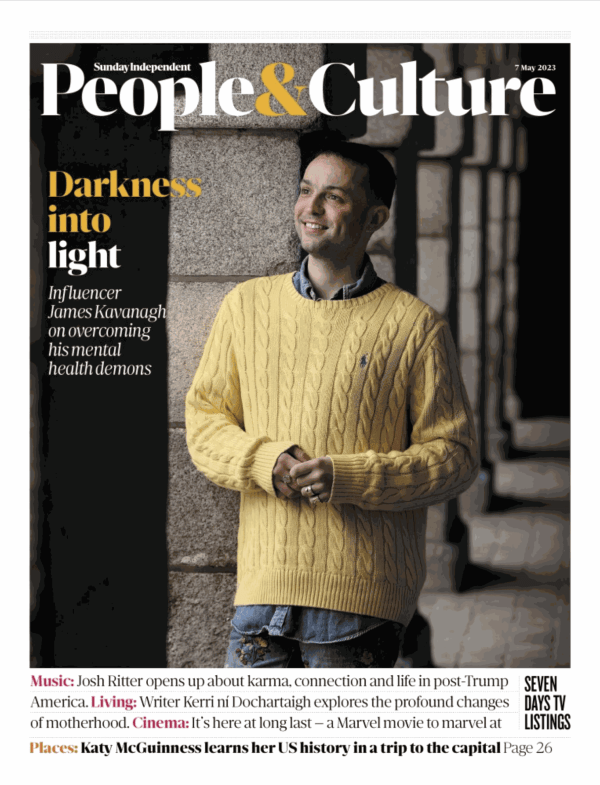Finding a natural refuge for growth and grieving
Art : What Lies Beneath
NIALL MACMONAGLE
MELISSA O'DONNELL
Mind Garden
Carrying on a family tradition, Melissa O'Donnell has planted roses and a cherry blossom tree in her new garden and "their presence acts as a visible daily connection to the memory of my parents and childhood”. Another early memory is of "making small art gift packages for my parents using cotton wool, tin foil, scraps of paper, threads, and miniature drawings packaged into envelopes with affectionate messages”. She sometimes went to work with her father, a graphic designer in RTÉ. "I loved the atmosphere of the place, high drafting tables, sharp pencils, the Letraset type setting and graphic materials.” Visits to the National Gallery and Chester Beatty taught her "to look and observe.”
The "natural world and environment and our place in it” is her subject matter. For O'Donnell, "nature can be a refuge of sorts” but she also loves to "research historical art and artists” and this combination means, in the digital age, that "we hold on to nostalgia for nature and how it was depicted through art history and yearn also for escapism and fantasy through streaming devices”.
She studied visual communications at college, worked as a graphic artist in the US and co-founded a design business in Dublin before becoming a fine art artist. "I still apply those learnt design skills and principles to my painting in terms of colour theory, form and composition.”
O'Donnell's new show came about when her mother, "during a seven-year journey with dementia, took a turn for the worse and I spent as much time with her as I could.”
After her mother died, she found in Simone Gooch and Derek Henderson's Rosa, a book of photographs, "a photo composition of yellow roses, my mother's favourite flowers, and the urge to sketch and paint it was so strong I did just that.” Flowers are "organic forms and shapes that reflect light and shades of colour and challenge your artistic abilities. You just have to look, react and paint. It was a huge comfort for me and a way of processing my own grief.” Using the internet and Rosa as her starting point, O'Donnell reworks and alters these images "through my own painting process” making what she calls paintings that are visceral and alive against a very quiet backdrop as it creates a tension in the works.”
In 'Mind Garden', O'Donnell uses botanical references from the 18th century German biologist/artist Ernst Haeckel along with "completely self-invented imaginary flowers in a surrealist tradition. In this work I have taken a collage approach where, playfully, anything can happen. In the real world it would not be possible to find those species co-existing.”
It began as two panels and became a polyptych because "the composition grew and needed it.” Working on all four panels simultaneously, "the gridded physical division, structure and order allow for a kind of freedom with the brushwork and movement within the canvas structure”. Beyond the flowers is a seashore and landmass, based on O'Donnell's memory of a garden and seashore in Kerry. "The landmass adds depth, is a nod to Paul Henry, and anchors all this wildness.”
The distinctive splatterings or blots - "very risky in the application” - are "a necessary act. If a work is predictable or safe looking, my impulse is to sabotage it in some way.”
Here, the blots do not blemish. They dance. They enhance.
'Beautiful Decay', Solomon Fine Art, Dublin 2, until May 27.
melissaodonnellartist.com;
Insta @odonnellartist_melissa





